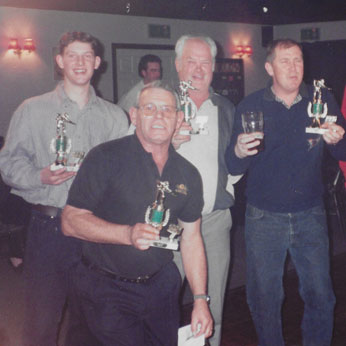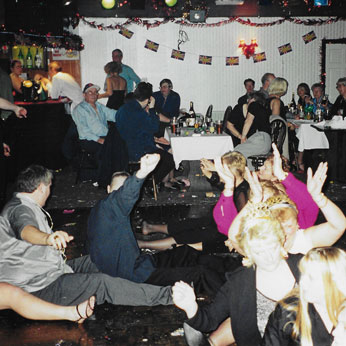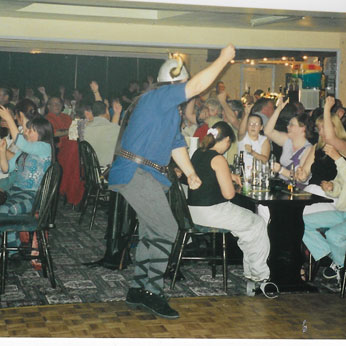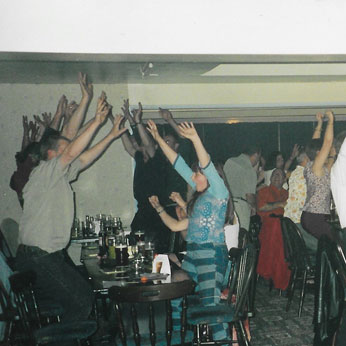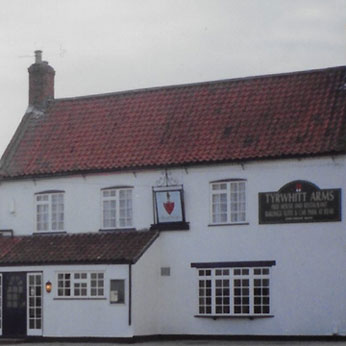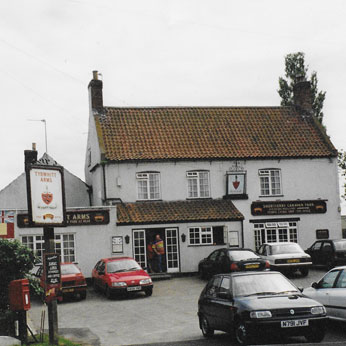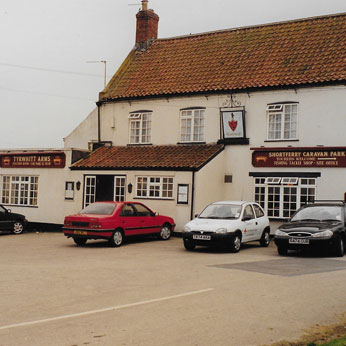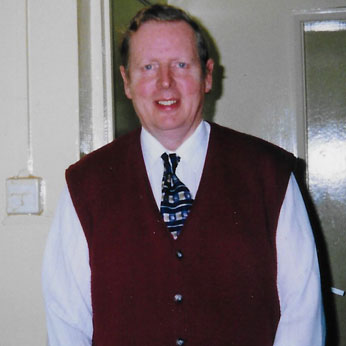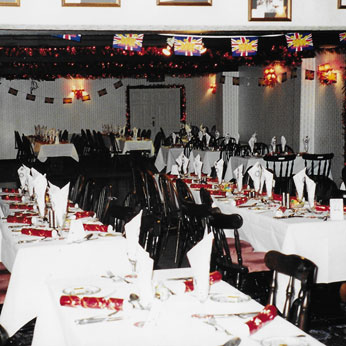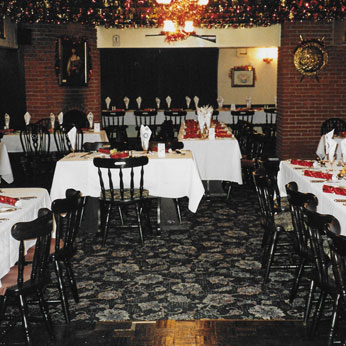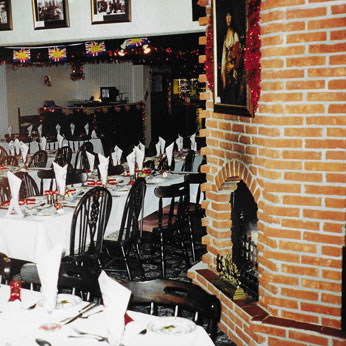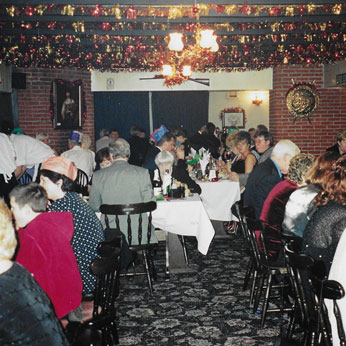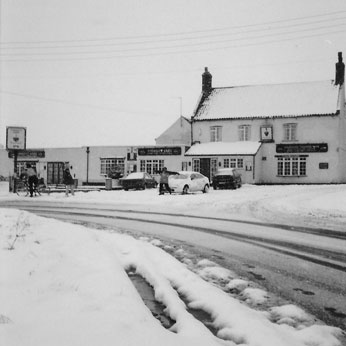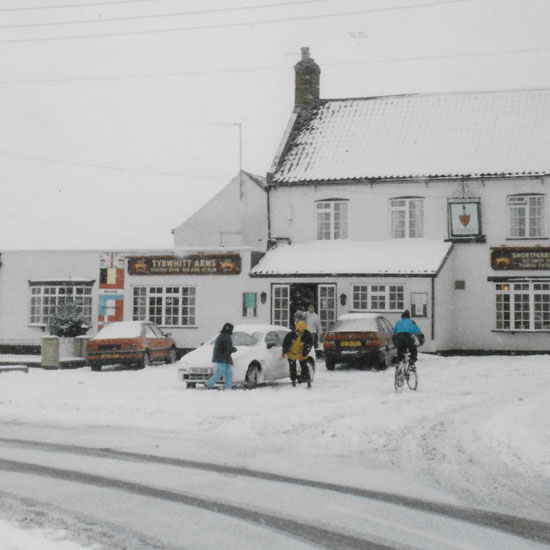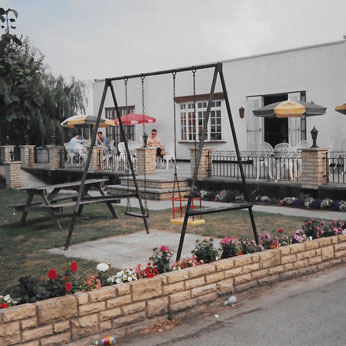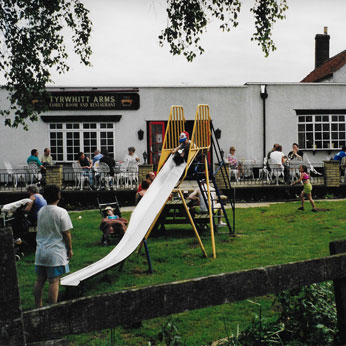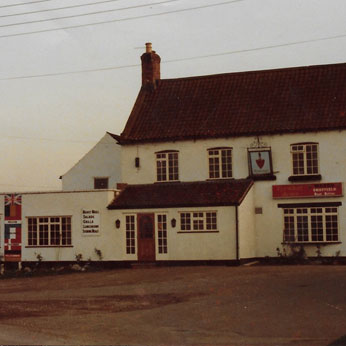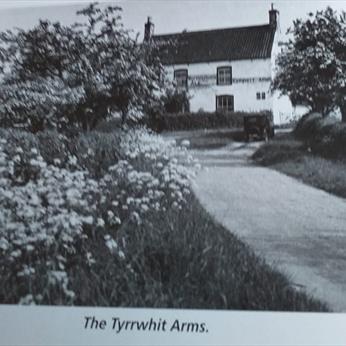About Us
Our History
There has been a licencee in the Hardman family since the mid 1950’s with Thomas Hardman running the Benvenute Social Club in Chapel St Leonards before the family built our first pub – The Benvenute Hotel on the same site (later renamed as The Neptune)
Pictures can be seen on this page of the whole Hardman family building and working in The Benvenute (That’s Bob at the top with the flat cap!)
Thomas, Bob and later Bernard Hardman were all Landlords of the Benvenute or Neptune.
After leaving the coast, Bob & the family purchased The Tyrwhitt Arms in 1981 and it has been in the family ever since with Rob taking over as landlord in the late 90s.
While the pub has been though many changes, the one constant since the late 70s was the Bar Manager Dave Brumhead who passed away in 2020 after working here for over 50 years! – was he the longest serving barman in the country? Possibly?
The earliest surviving recorded name for the licensee was Joshua Graham in 1802.The bridge was a toll bridge in the early 20th.century with the licensee collecting the toll and opening the gate. (Thanks to Peter Burnett For This)
"The pub is named after local landowners, the Tyrwhitts. The Tyrwhitt Baronetcy, of Stainfield in the County of Lincoln, was created on 29th June 1611 for Philip Tyrwhitt. The fourth Baronet represented Grimsby in the House of Commons. The fifth and sixth Baronets both sat as Members of Parliament for Lincoln. The title became extinct on the latter's death in 1760." . (Thanks to Karen Shelbourn for this)
The Tyrwhitt was originally a coaching house for Lord Tyrwhitt Drake and has been through many modifications and refurbishments since.
Some fascinating history of the Bridge at Short Ferry from the Book People and Places of West Lindsey, Lincolnshire by Adrian Gray:
Short Ferry sits between Fiskerton and Bardney in the midst of one of the most fascinating prehistoric landscapes in Lincolnshire, where two important rivers join.Here the Witham is joined by the waters of the Langworth River or Barlings Eau, though the latter is certainly wrong as ‘Ea’ was more the generic term for a river.
The Ordnance Survey and the Environment Agency now calls it the Barlings Eau. Possibly the confluence was known as ‘Barleymouth’ since a monastic grange of this name stood in the NW angle, an important fishery and fish-smoking centre.The road to Stainfield is believed to be part of a causeway dating to prehistoric times that was later maintained by Bardney Abbey and Stainfield Nunnery. This must have crossed at the ’short ferry’ and gone on to Fiskerton.The rivers here were amended by the late 1700s improvements, completed in 1788. When the Barlings Eau was ‘cleaned out’ that year, an ancient armament was found near the bridge. Another prehistoric log boat, perhaps three thousand years old, was found here in 1952.The remains of two more were found in 1966 and another in 1976. In 1953 some remains were found nearby in Stainfield parish.At some point the ‘Short Ferry’ was replaced by a bridge. This was a toll bridge for many centuries. Both ferry and bridge would traditionally be maintained by the lord of the manor. In 1874 an attempt was made with the Witham Bridges & Ferries Bill to free it from tolls but there was an error in depositing plans, and there was another attempt in 1887 when it was in danger of collapse and had to be rebuilt. These<




